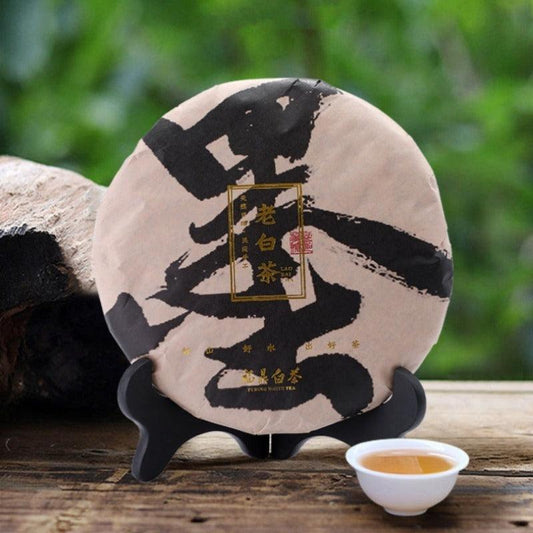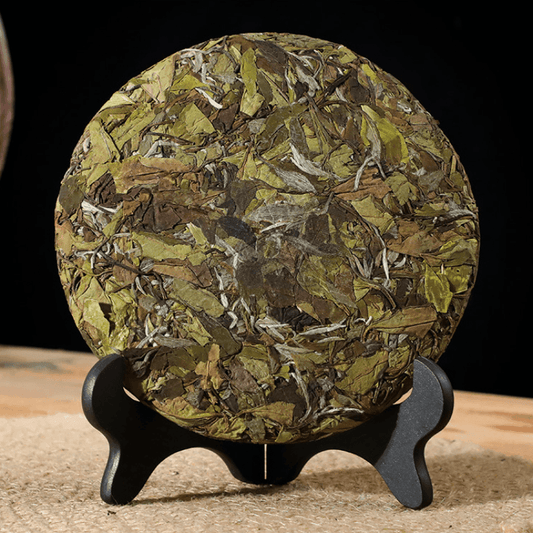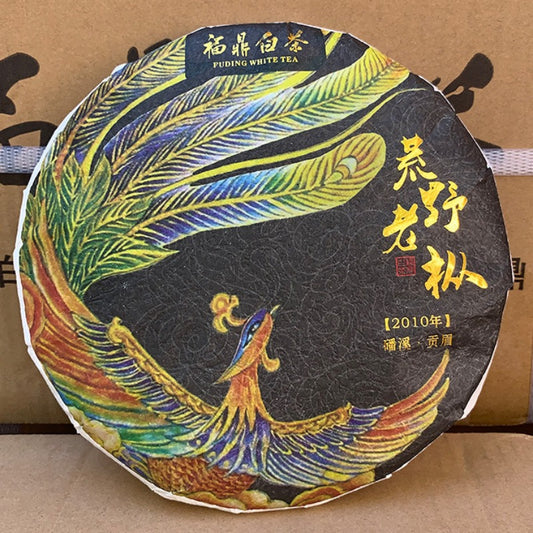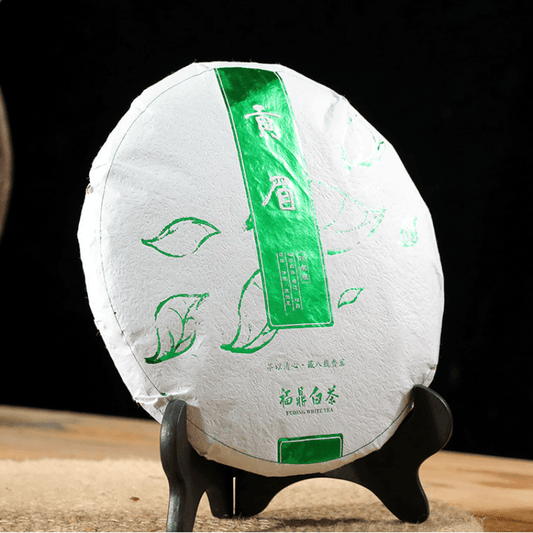Gong Mei White Tea: The Refined Hermit of Fujian's Tea Gardens
In the world of Chinese white teas, Gong Mei stands as an understated scholar—less regal than Silver Needle yet more refined than Shou Mei. Its name, meaning "Tribute Eyebrow," reflects both its historical status and delicate appearance resembling slender eyebrows. When you unfold a handful of dry leaves, the mosaic of grayish-green leaves interspersed with silvery buds evokes a Song Dynasty ink painting—minimalist yet profoundly elegant.
I. Origins & Craftsmanship: From Imperial Tribute to Modern Treasure
Gong Mei traces its lineage to Qing Dynasty (1644-1912), when local officials selected these exceptional leaves as tributes to the emperor. Traditionally crafted from the Xiao Cai Cha bush variety (a heritage tea plant), authentic Gong Mei should contain one bud with two or three young leaves, distinguished by:
l Leaf Composition: More buds than Shou Mei, larger leaves than Bai Mu Dan
l Authentic Characteristics: Connected buds-and-leaves, naturally curled edges, gray-green coloration with abundant trichomes (white hairs)
l Modern Variations: Some producers now use Da Bai or Shui Xian cultivars, though purists argue only Xiao Cai Cha yields the true floral depth
The minimalist processing—no frying or rolling, just withering and drying—preserves the tea's original character like pressed botanicals.
II. The Connoisseur's Checklist: 5-Step Evaluation
-
Visual Inspection
Premium: Balanced bud-to-leaf ratio, intact flexible leaves, natural gray-green hue with velvety trichomes
Inferior: Broken leaves, dull brown (over-oxidized) or suspiciously bright green (possible artificial aging)
-
Liquor Clarity
l Young tea: Pale apricot-yellow, luminous
l Aged tea: Amber but always crystal-clear
Warning: Cloudiness or reddish tints indicate flawed processing/storage
-
Aroma Profile
l 1-2 years: Fresh floral with subtle grassy notes
l 3+ years: Evolves into jujube-date and herbal medicinal notes
Reject if musty, sour or chemically scented
-
Palate Experience
Quality markers: Sweet umami upfront, fleeting astringency, cooling aftertaste
Defects: Flat taste, persistent bitterness, off-flavors
-
Spent Leaves
Healthy: Uniform yellowish-green, pliable texture
Flawed: Red spots (over-fermentation) or blackened areas (processing errors)
III. Brewing Alchemy: Unlocking Twelve Layers of Flavor
Equipment Choices:
l Porcelain gaiwan (110ml) for aromatic complexity
l Zhuni clay teapot enhances aged tea's richness
l Glass steeper ideal for wintertime boiling of mature teas
Water Temperature:
l Young tea: 90-95°C (wait 2 mins after boiling)
l Aged tea: 100°C rolling boil
Golden Ratio: 5g leaves per 110ml water
Brewing Sequence:
1. Awakening rinse: Quick 5-second wash (optional drinking)
2. Initial 3 infusions: Immediate pours, capturing floral highs
3. Middle 3 brews: Add 5-10 seconds each, observing flavor shifts
4. Beyond 7 steeps: Extended steeping or boiling recommended
Storage Protocol: Triple-layer method (aluminum foil + food-grade plastic + carton), stored elevated in cool darkness. Humidity-prone regions require desiccant packs.
IV. Flavor Odyssey: Vintage Variations
Young Gong Mei (1-2 yrs):
l Dry leaf: Meadow flowers + cut grass
l Liquor: Springwater clarity with orchid hints and honeyed finish
l Example: 2023 Fuding Panxi harvest—vibrant with bamboo shoot sweetness
Aged (3-5 yrs):
l Aroma shift: Candied dates + faint ginseng notes
l Texture: Noticeably viscous, rounded sweetness
l Benchmark: 2019 Zhenghe version—lingering stone fruit aroma
Vintage (7+ yrs):
l Rare qualities: Sandalwood + dark chocolate undertones
l Serving suggestion: Boiled with red dates
l Caution: Authentic decade-old stocks are scarce—verify provenance
V. Gastronomic Pairings: Flavor Symphonies
1. Bright Pairings: Chaozhou preserved fruits, jasmine tea jelly
2. Classic Combinations: Fujian sesame crackers, Chinese yam cakes
3. Innovative Matches: Salmon sashimi (cuts through oiliness)
4. Wellness Duo: Aged tea with dried tangerine peel aids digestion
Avoid: Spicy foods (e.g., hotpot) overwhelm delicate flavors.
VI. Wellness Insights: Nature's Phytochemical Gift
Scientific studies confirm Gong Mei's flavonoids increase with aging, offering antioxidant benefits. Its moderate polyphenol content provides gentle stimulation without green tea's aggressiveness.
Optimal Timing:
l Morning: Mature teas (3+ yrs) for gentle awakening
l Afternoon: Fresh harvests to combat fatigue
l Evening: Avoid large quantities; small cups of aged tea acceptable
Ideal For:
l Digital eye strain sufferers (rich in vitamin A precursors)
l Those with sensitive digestion (catechins aid motility)
In our accelerated era, Gong Mei teaches the art of deceleration. As hot water kisses the leaves, watching silver buds pirouette and tightly wound leaves gradually unfold becomes meditation in motion. Each sip translates Fujian's terroir—sunlight, mist, minerals—into liquid poetry. Whether accompanying solitary reflection or shared conversation, a pot of Gong Mei offers the perfect companionship: unassuming yet profoundly articulate.

![2009 Fuding Premium White Tea Cake [Gaoshan Hanlu Gong Mei] - YIQIN TEA HOUSE | yiqinteahouse.com | gong mei, tea, white tea](http://yiqinteahouse.com/cdn/shop/products/2009-fuding-premium-white-tea-cake-gaoshan-hanlu-gong-mei-yiqin-tea-house-yiqinteahouse-com-1.png?v=1724349680&width=533)

![2020 Fuding White Tea Cake [Diancang Gaoshan Gong Mei] - YIQIN TEA HOUSE | yiqinteahouse.com | gong mei, tea, white tea](http://yiqinteahouse.com/cdn/shop/products/2020-fuding-white-tea-cake-diancang-gaoshan-gong-mei-yiqin-tea-house-yiqinteahouse-com-1.jpg?v=1723258794&width=533)

![(Limited Edition) 2010 Fuding Premium White Tea Cake [Wild Laocong Gong Mei] - YIQIN TEA HOUSE | yiqinteahouse.com | gong mei, tea, white tea](http://yiqinteahouse.com/cdn/shop/files/2010-fuding-premium-white-tea-cake-wild-laocong-gong-mei-yiqin-tea-house-yiqinteahouse-com-1.jpg?v=1723793954&width=533)

![2012 Fuding White Tea Cake [Gong Mei] - YIQIN TEA HOUSE | yiqinteahouse.com | gong mei, tea, white tea](http://yiqinteahouse.com/cdn/shop/products/2012-fuding-white-tea-cake-gong-mei-yiqin-tea-house-yiqinteahouse-com-1.png?v=1723258774&width=533)

